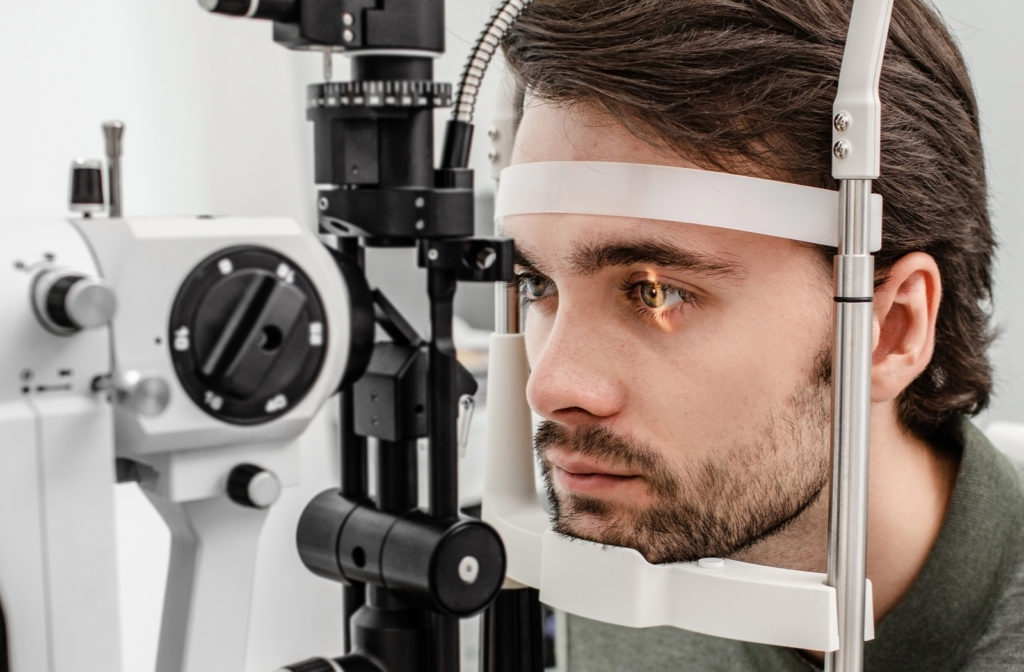Affordable and Caring Optometrist Riverside for All Ages
Affordable and Caring Optometrist Riverside for All Ages
Blog Article
The Comprehensive Eye Exam: What to Anticipate During Your Visit to the Eye Doctor
A check out to the eye doctor for a comprehensive eye test is even more than a regular check-up; it is a vital step in guarding your visual health. What exactly occurs throughout the eye health evaluation, and exactly how does it affect the prescription process?
First Consultation
The initial appointment during an eye examination functions as an important structure for understanding a client's visual health and wellness requirements. This stage establishes the tone for the entire examination procedure, permitting the eye doctor to gather vital info concerning the patient's case history, way of living, and particular vision problems. By diligently reviewing any type of pre-existing problems, medicines, or previous surgical treatments, the eye care specialist can tailor the exam to deal with private demands efficiently.

Additionally, the initial examination is a chance for clients to voice any inquiries or issues, fostering a collective relationship with their health care company. This communication not just ensures that the individual really feels notified and comfy but likewise equips them to take part proactively in their eye health and wellness monitoring. Jointly, these conversations allow the optometrist to create an individualized exam plan, ensuring ideal treatment and accurate diagnosis.
Visual Acuity Examination
Beginning the core parts of an eye examination, the visual skill examination is developed to analyze the sharpness and clarity of a patient's vision. This vital examination assists establish just how well a person can discern letters or icons at a standardized distance, generally utilizing a Snellen graph (Eye Doctor). The graph consists of rows of letters that decrease in dimension from leading to bottom, with the person positioned at a popular distance of 20 feet
Throughout the test, the person is asked to cover one eye and read aloud the smallest line of letters they can see plainly. This process is duplicated for the various other eye. The outcomes are tape-recorded as a fraction, with 20/20 vision showing normal aesthetic acuity-- where the patient can see at 20 feet what an individual with typical vision can see at that range.
The aesthetic skill examination also determines potential refractive mistakes such as myopia, astigmatism, or hyperopia, which could require corrective lenses. By developing a standard of aesthetic efficiency, the test is a vital diagnostic device that assists the eye care professional in creating a proper therapy strategy tailored to the individual's special aesthetic requirements.
Eye Wellness Evaluation
Complying with the aesthetic acuity test, an extensive eye health and wellness evaluation is performed to make sure the overall health of the eyes. This critical section of the eye test includes a complete assessment of both the exterior and interior structures of the eye.
Next, focus changes to the interior frameworks. Via using ophthalmoscopy or fundus photography, the retina, optic nerve, and capillary are carefully evaluated. This step is vital for determining problems such as retinal detachment, glaucoma, or diabetic retinopathy. In several situations, student expansion is carried out to boost presence of the internal eye frameworks, although this may result in short-term light sensitivity for the individual.
In addition, intraocular stress is gauged to screen for glaucoma threat. This is usually done making use of tonometry, which can find elevated pressure levels that could recommend potential damage to the optic nerve. Jointly, these analyses create a comprehensive evaluation to maintain eye health and wellness.
Refraction and Prescription
Refraction is a sophisticated treatment performed by eye treatment experts to identify the exact lens power needed to correct refractive errors such as myopia, astigmatism, presbyopia, and hyperopia. The goal of this procedure is to examine exactly how light bends as it passes through the eye, permitting the professional to identify whether corrective lenses are needed for enhanced visual acuity.
Throughout the refraction procedure, the individual is asked to look with a phoropter, a gadget that has numerous lenses. The expert will methodically transform these lenses and ask the client to contrast clearness in between alternatives up until the very best possible vision is achieved. This procedure is critical in crafting an accurate prescription that specifies the proper lens power for eyeglasses or contact lenses.
The prescription originated from this procedure not only maximizes vision yet also works as a foundation for selecting ideal rehabilitative eyewear. It is important to make sure that prescriptions are routinely upgraded, as changes in vision can occur over time, highlighting the significance of routine eye assessments. This meticulous interest to information aids maintain clear, comfortable vision in day-to-day live.
Follow-Up Suggestions

During a follow-up check out, the eye physician will certainly carry out a collection of examinations to assess visual skill and look for any type of modifications in vision that could demand an update to the prescription. Furthermore, the follow-up provides an opportunity to talk about any discomfort or concerns experienced with present eyeglasses. Adjustments can be made to ensure convenience and effectiveness, whether through lens alteration or structure modifications.
For clients with ongoing problems such as glaucoma, diabetes-related eye problems, or macular degeneration, even more regular follow-ups may be required. These consultations are crucial for taking care of and possibly slowing the development of eye disease. Sticking to these suggestions can considerably add to preserving visual health and wellness and stopping long-term difficulties.
Conclusion
The comprehensive eye test is a vital process for maintaining aesthetic health and wellness, incorporating an in-depth evaluation of case history and vision issues. Key parts consist of the visual skill examination, which reviews sight quality, and the eye wellness evaluation, which analyzes the general condition of the eyes. Refraction tests assist identify the accurate lens prescription necessary for optimum vision correction. Follow-up referrals provide support for ongoing eye care, making sure that any kind of possible issues are addressed promptly and efficiently.
A browse through to the eye doctor for a detailed eye exam is more than a routine check-up; it is a critical action in safeguarding your visual health.Kicking off the core elements of an eye assessment, the aesthetic skill examination is designed to analyze the sharpness and clearness of a client's vision.Adhering to the aesthetic skill test, view publisher site a detailed eye health and wellness analysis is carried out to guarantee the general wellness of the eyes. These you can find out more visits allow the eye care professional to monitor changes in vision, upgrade prescriptions, and examine the general health of the eyes. Key parts consist of the visual skill examination, which reviews vision clearness, and the eye health analysis, which analyzes the overall problem of the eyes.
Report this page